BROOKLYN’S FIRST DAY OF SCHOOL (1916)
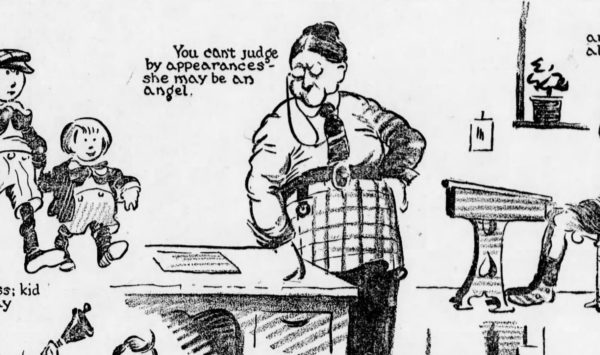
******************************************************************************************************************************** Brownstone Detectives investigates the history of our clients’ homes. The story you are about to read was composed from research conducted in the course of one of those investigations. Do you know the history of YOUR house? ******************************************************************************************************************************** At the beginning of the school year in 1916, the Brooklyn Daily Eagle published a set of cartoons, in its Sunday, 17 September edition, lampooning the first day of school for children, janitors, teachers, and parents, alike. We faithfully reproduce the graphics and the accompanying musing here: “Funny things really happen on the first day of school, though most of us don’t like laughing just then We have to wait until we are in a happier frame of mind. Do you remember the boy who always starts the year by being late? He wouldn’t make an exception of the first day – that would be against his principles. You see, he has only had three months to get to school on time, so you can’t expect him to do it on such short notice. In the last five minutes of those three months he suddenly realizes that he is late. Then he rushes and gets to class just three minutes overdue, and very much out of breath. “There are girls like this, too, but they are not so numerous as the boys. Girls as a rule get to school on a much more regular time schedule than boys. There are four reason for this; they like school better; they fear teacher […]
FIRST DAY OF SCHOOL IN BROOKLYN (1916)
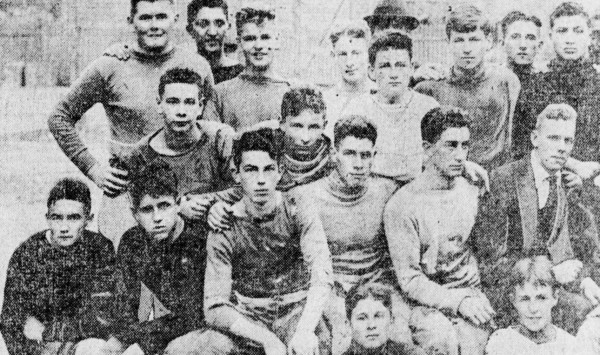
******************************************************************************************************************************** Brownstone Detectives investigates the history of our clients’ homes. The story you are about to read was composed from research conducted in the course of one of those investigations. Do you know the history of YOUR house? ******************************************************************************************************************************** For those of your sending children off to school these days, we leave you with a picture story of the first day of school back in 1916. It appears that school children had it very much the same as they did more than 100 years later. Check out the outfits, the books, the toys, the football uniforms, and….the Crokinole? Follow @BrownstoneDetec Share ———————————————————————————————————————– The Brownstone Detectives Brownstone Detectives is an historic property research agency. Our mission is to document and save the histories of our clients’ homes. From our research, we produce our celebrated House History Books and House History Reports. Contact us today to begin discovering the history of your home.
THE SINGING DOG OF LINCOLN PLACE (1915)
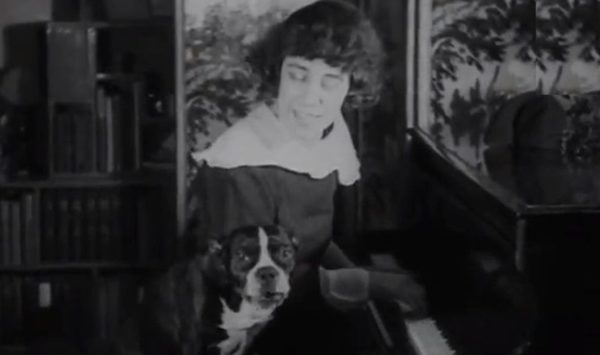
******************************************************************************************************************************** Brownstone Detectives investigates the history of our clients’ homes. The story you are about to read was composed from research conducted in the course of one of those investigations. Do you know the history of YOUR house? ******************************************************************************************************************************** Nothing makes front page news like the ridiculous or the sublime. Just over 100 years ago, the stage was certainly given over to the ridiculous. That year – 1915 – produced the first-ever crooning canine. And “Bunny,” the French bulldog was its name- or, rather, was it “Gaby,” the French bulldog – but, perhaps, it was “Bunny”? This confusion, it seemed, was the apex upon which would spin the entire ever-dizzying melodrama concerning the ownership of said dog – and to obscure matters even slightly further, there was a total of three individuals who seemed to be quite certain that each was the master to this now-famous dog. The contest, thus, was set, the curtains prepared to be drawn, and the public waited impatiently to review every detail of the salacious tragedy in an effort to determine the eventual players of the parts – in particular, who would emerge before the footlights in the precious and coveted melodramatic role of supporting actress to Bunny (or Gaby), the singing dog. And the newspapers covered it all, down to its last partially accurate detail. SETTING THE STAGE The Bunny-Gaby trial was certain to provide some good pieces for the newspapers for at least a week as the case weaved its way through the […]
SNIDELY WHIPLASH IN THE BRONX (1921)
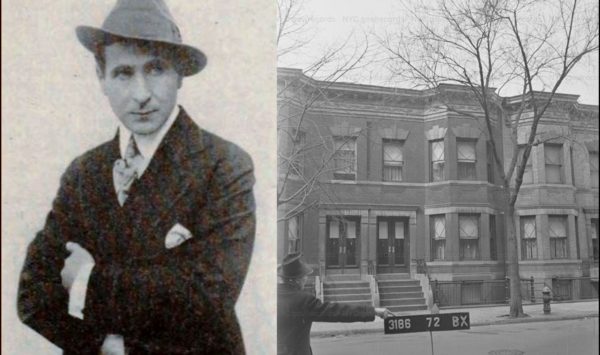
******************************************************************************************************************************** Brownstone Detectives investigates the history of our clients’ homes. The story you are about to read was composed from research conducted in the course of one of those investigations. Do you know the history of YOUR house? ******************************************************************************************************************************** In 1921, a “picture actor” by the name of Paul W. Panzer had gone broke. Panzer, recently flush with cash, had filed a “voluntary petition in bankruptcy” for liabilities totaling approximately $2,500. The debts appeared to be to a number of sources – a loan to a recently formed Long Beach production company of which Panzer was a trustee, money loaned to him and several other “film people” (possibly also to the same production company), as well as, amongst others, a loan that was endorsed by two very well-known and successful actors of the time, Sheldon Lewis and King Baggot (Baggot, an international movie star, was referred to – at various times – as “King of the Movies,” “The Most Photographed Man in the World” and “The Man Whose Face Is As Familiar As The Man In The Moon”). In the petition, Panzer, gave his address as “2257 Walton avenue,” where he rented a 2-story and basement rowhouse and, according to the 1920 Federal Census, lived there with his wife, their 8-year-old daughter, and their 6-year-old son. Panzer’s bankruptcy was certainly a low-point for the actor who rose to fame just half a decade earlier as the infamous villain of the smash 1914 serial silent film, The Perils of Pauline, a […]
DITCHING YOUR HOME’S OUTDATED GAS (1916)
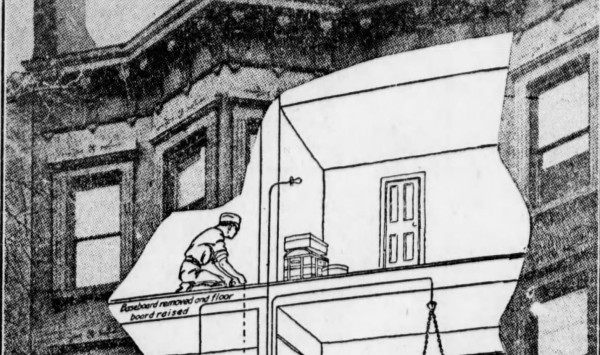
******************************************************************************************************************************** Brownstone Detectives investigates the history of our clients’ homes. The story you are about to read was composed from research conducted in the course of one of those investigations. Do you know the history of YOUR house? ******************************************************************************************************************************** Every winter, old house owners hear the same old conversations that they heard the winter previous: “I’m thinking about making the switch from oil to gas.” “O, man, you’re going to love it. We did it and it saved us a ton on energy last winter.” “But it’s so expensive.” “But so worth it – you’ll see.” Back in the 1910s, though, no one was converting TO gas – they were converting AWAY from it. NO HOUSE TOO OLD TO BE ELECTRIFIED There is an irony to a 1916 ad which claims that no home was “too old to be electrified.” It begs the question: “How old is too old?” Did people believe that only new homes could be electrified? Did they think that if theirs had not been wired for electricity when it was built that it could not be electrified after the fact? Or maybe they just thought that the house would not be standing long enough for the owner to get any enjoyment out of getting it wired. All good questions. Perhaps they lead to misconceptions that the Edison Electric Illuminating Company of Brooklyn (a forerunner to “ConEd”) was trying to correct – so that they could sell more homeowners their services. WHEN WERE HOUSES ELECTRIFED? If your […]
THE RULES OF FASHION IN BROOKLYN (1910)
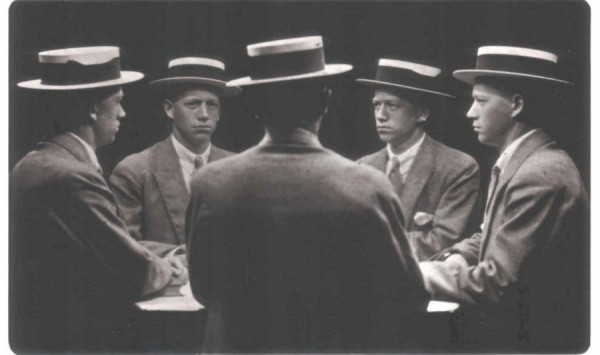
******************************************************************************************************************************** Brownstone Detectives investigates the history of our clients’ homes. The story you are about to read was composed from research conducted in the course of one of those investigations. Do you know the history of YOUR house? ******************************************************************************************************************************** Although it may not be apparent today, Brooklyn was not always known for being on the edge of trends in fashion. As a matter of fact, the town was a noted backwater 150 years ago when the only other more fashionable place than its exceedingly fashionable neighbor just across the East River was London and Paris. But Brooklyn tried. And part of that effort was its strict observance of the rules and rituals of the fashions of the changing seasons. One, for instance, did not wear white trousers at the wrong time of year. Nor were certain color jackets worn at the wrong time of the season. Another men’s fashion rule that was strictly observed was the timing of the use of the men’s straw hat. This rule was so encased in society that if they were worn too early in the season, this act could invite derision – even from children. In 1910, on the 15th of April, it was apparent that one gentleman was challenging that rule. He was seen “this afternoon, at 2:16 o’clock, in the Federal Building,” wearing the boater. It was on a “chunky man of 40 years, who stood in the registry line, fingering a roll of bills.” “The straw created a mild sensation among […]
THE “7-SECOND MAN” OF BED-STUY (1918)
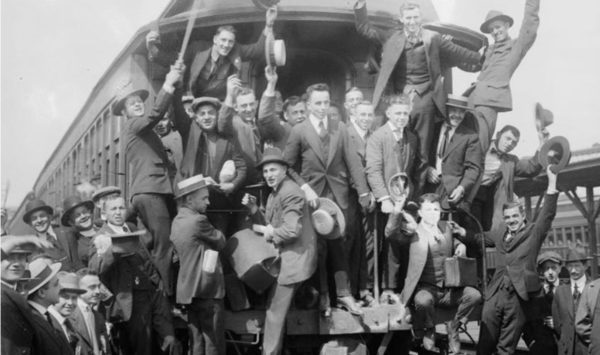
******************************************************************************************************************************** Brownstone Detectives investigates the history of our clients’ homes. The story you are about to read was composed from research conducted in the course of one of those investigations. Do you know the history of YOUR house? ******************************************************************************************************************************** The new “Victory and Peace” war memorial at Saratoga Park, located in the Stuyvesant East section of Brooklyn, was the subject of a public dedication on 10 September 2014. The Brownstone Detectives worked closely with the Parks Department by locating pictures, stories, and relatives of the Stuyvesant Heights men who gave their lives in the Great War. This biography is about one of those men. PRIVATE EDWARD J. BELL In 1920, as the “War to End All Wars” was still fresh on America’s collective conscious, American Legion posts were sprouting up everywhere. The trend existed for two reasons: to support the men who had come back from the front, and to memorialize those who never returned. Many of the posts were named after those who had made the ultimate sacrifice. The Edward J. Bell Post No. 790 had recently been formed to honor Edward Joseph “Eddie” Bell, a 25-year-old machine-gunner, and Purple Heart winner, who died in France on 16 August 1918, from the result of injuries sustained in combat. Born on 6 November 1892, Bell had lived with his father, his aunt and his grandparents at 735 Macon Street. Sometime around 1910, the tall, black-haired, and blue-eyed Bell had graduated from Commercial High School, and soon thereafter lost his father. […]
A BROOKLYN BLVD. BENEATH THE SEA (1910)
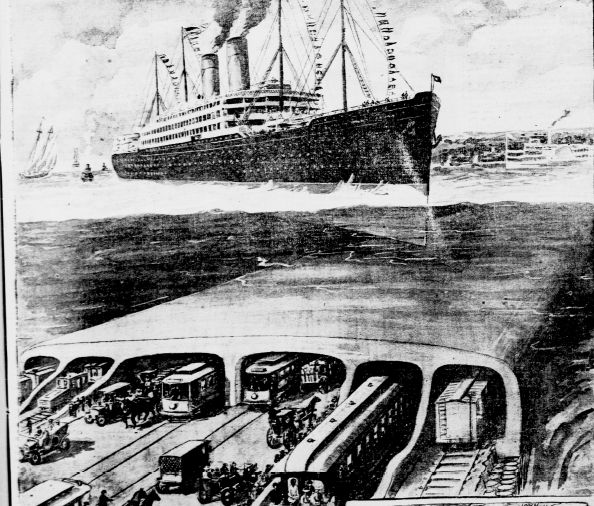
******************************************************************************************************************************** Brownstone Detectives investigates the history of our clients’ homes. The story you are about to read was composed from research conducted in the course of one of those investigations. Do you know the history of YOUR house? ******************************************************************************************************************************** Following the turn of the last century, after the Brooklyn Bridge had gone up connecting New York City to Brooklyn’s borough, the former “City of Homes and Churches,” as a direct result, started to experience phenomenal growth. By 1909 the Manhattan Bridge was opening to address the overflow of Brooklyn residents needing another way of getting in and out of Manhattan. This growth caused New York politicians to start thinking about a way to spur that same growth on Staten Island by establishing an easier way of moving between these two boroughs. Before talk of a bridge began, though, there was talk of a grand tunnel. Towards the end of the decade, that talk got more serious and front pages like the one above began to earnestly ask the question, “Just how will we travel between Brooklyn and Staten Island?” A tunnel gained early traction and the city’s commissioners began to look seriously at its feasibility. In the New York Tribune, it was posited that such a tunnel would keep our residents’ dollars within the city limits by restricting their ability to travel elsewhere and not letting them “get away to Jersey or Westchester.” “A tunnel 100 feet wide and 10,000 feet long,” the paper noted, “easy of approach at either […]
WHEN BROOKLYN’S SUBWAYS WERE CAVING IN
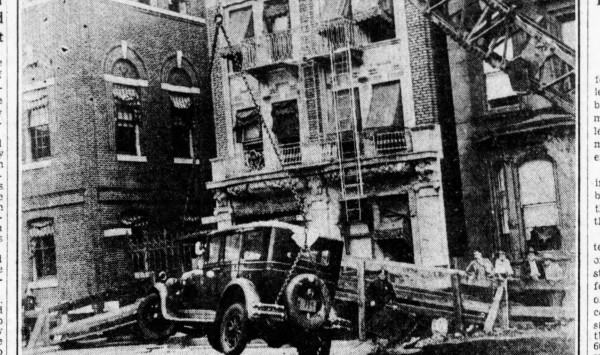
Back in the day, when subways were being dug throughout the city, cave-ins were a common occurrence. Very often these cave-ins were caused by water leakage or seepage, or heavy rains. As such, the City began to run drainage water in overhead tubes to keep the area near the subway digs in-tact. Follow @BrownstoneDetec ———————————————————————————————————————– The Brownstone Detectives The story you have just read was composed from historical research conducted by The Brownstone Detectives. It was uncovered during the extensive research that our clients commission us to perform on their historic homes, research which culminates in the production of one of our celebrated House History Books. If you are interested in discovering the history of your home, contact us today.
PVT. EDWIN RUOFF (A BEDSTUY HERO) (1918)
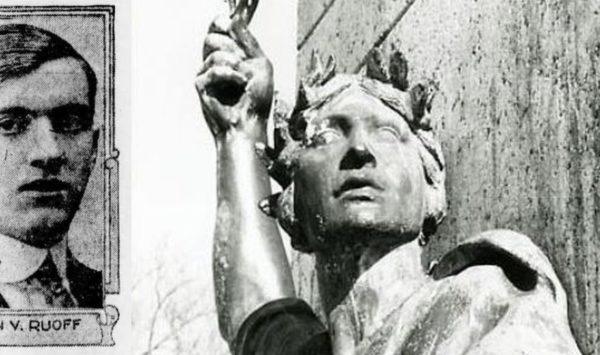
******************************************************************************************************************************** Brownstone Detectives investigates the history of our clients’ homes. The story you are about to read was composed from research conducted in the course of one of those investigations. Do you know the history of YOUR house? ******************************************************************************************************************************** In 2014, The Brownstone Detectives partnered with the New York City Parks Department to help celebrate the lives of the servicemembers of Bedford-Stuyvesant Heights who made the ultimate sacrifice during the Great War. We researched these heroes to locate pictures, stories, and their descendants to be brought together for a ceremony that dedicated a new “Victory and Peace” war memorial at Saratoga Park. This biography tells the story of one of those servicemembers. PVT. EDWIN V. RUOFF Before being drafted into the U.S. Army to fight in the Great War, Private Edwin V. Ruoff was a resident of Stuyvesant Heights where he lived at 193 Ralph Avenue. He was killed in an accidental bomb explosion on 3 June 1918 in France, when a supposedly harmless shell went off. The explosion, which took the lives of 45 soldiers in total, occurred when the company was drilling. It all started when one of the men discovered the “bomb or hand grenade” and “began fooling with it.” Then, “after tossing it about and whirling it around, he let it drop. As the missile hit the ground, there was a terrific explosion, the force of which threw almost every member of the company to the ground.” THE ARMY VISITS MRS. RUOFF According to the Brooklyn […]